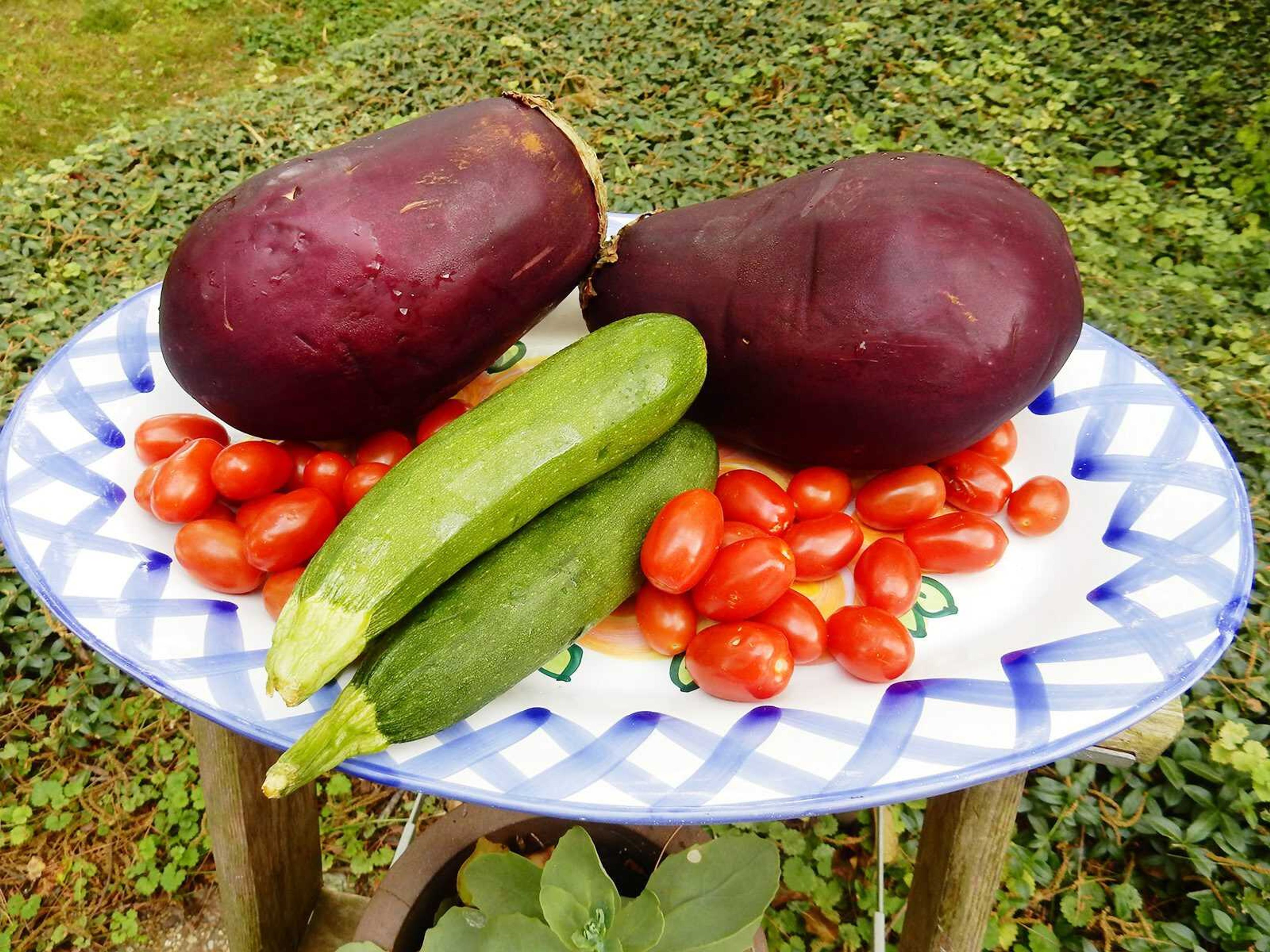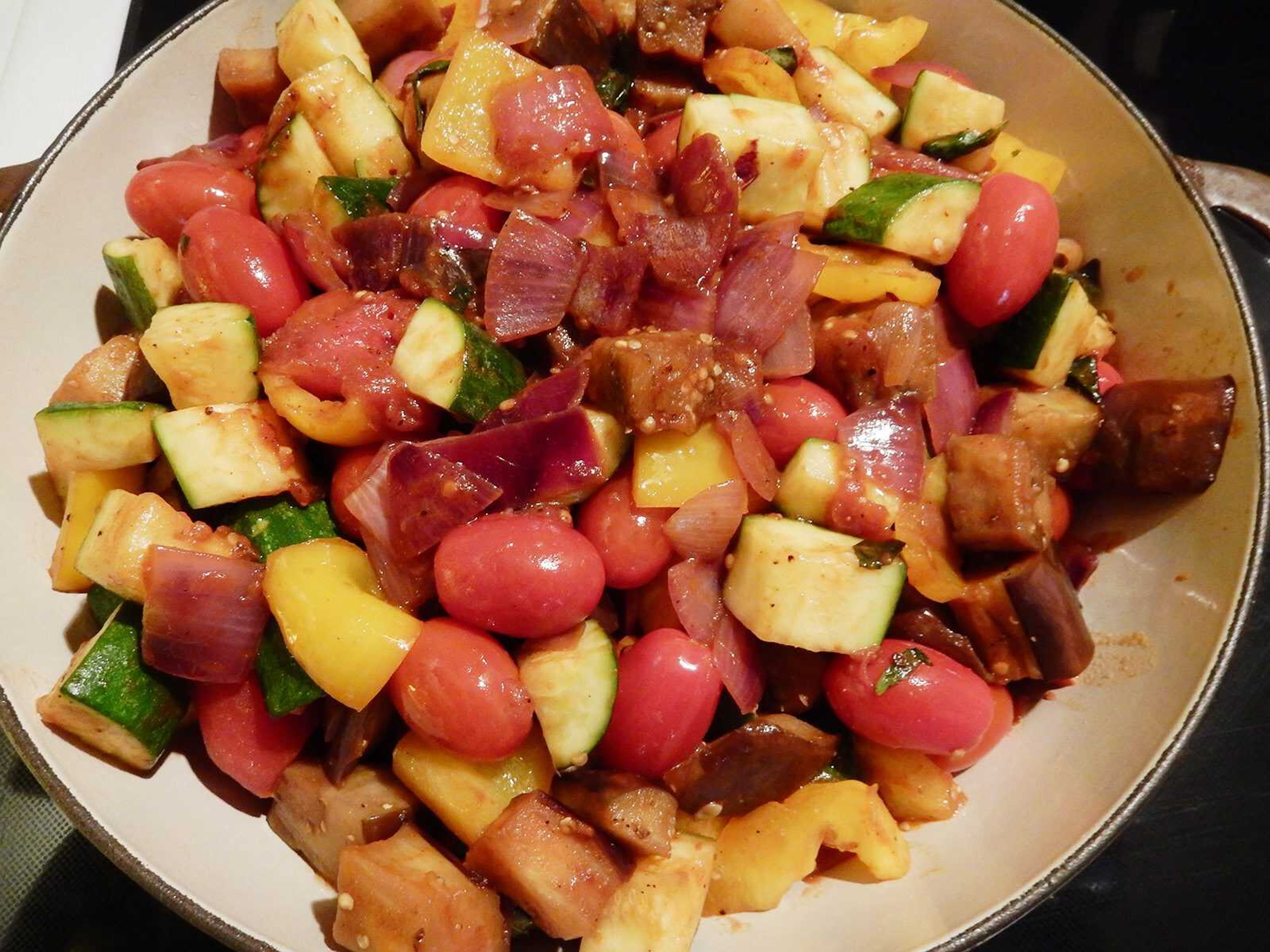Ratatouille rules
"Confit Byaldi." How's that for the name of a movie starring a surprisingly adorable cartoon rat who likes to cook? My guess is had the Disney/Pixar movie with the same premise been given that name, perhaps not enough people would have seen it for it to have won an Oscar or be voted by the BBC one of the 100 greatest motion pictures of the 21st century...
"Confit Byaldi." How's that for the name of a movie starring a surprisingly adorable cartoon rat who likes to cook? My guess is had the Disney/Pixar movie with the same premise been given that name, perhaps not enough people would have seen it for it to have won an Oscar or be voted by the BBC one of the 100 greatest motion pictures of the 21st century.
The actual name of that award-winning movie is "Ratatouille," a play on words. That's the name of the iconic rustic French vegetable stew which has a starring role in the film while Remy, the main character who prepares it, is not the familiar and friendly mouse with a high-pitched voice seen in so many Disney cartoons, but a rat.
But it turns out that on the advice of the film's food consultant Thomas Keller, proprietor of the famed French Laundry restaurant (where dinner will set you back at least $350 per person and up to $850), the supposedly titular dish served by Remy to the crusty restaurant critic in the finale of the movie, and which brings him to tears, is not strictly speaking ratatouille at all. It's confit byaldi, a not dissimilar but more photogenic concoction.
Frankly, as far as I'm concerned, conventional ratatouille is quite pretty enough, especially this time of year when fresh vegetables, its principal ingredients, are plentiful.
Moreover, the dish is extremely versatile. You can serve it with meat, or fish, or all by itself. You can put in pasta, or on rice or polenta, or even pizza. At our house we like it topped with a fried or poached egg. Plus, it can be eaten hot, cold or at room temperature. And it even tastes better the next day.

Though you'll find ratatouille on the menus of any number of Michelin-starred French restaurants, it started out as a rather plebeian concoction. The first use of the term "ratatouille," which comes from the French word "touiller," meaning to stir up, is in a 19th century French military journal which describes the dish as a rather unappetising mush for soldiers and prisoners alike.
Happily, over the years peasant cooks from Provence have taken the dish far beyond the mess hall by capitalizing on their region's bounty of eggplants, tomatoes, bell peppers, onions and zucchini, for purists the essential ingredients of the fare today. As the National Geographic puts it, "It's a dish that sings of Provencal summers."
Like many French preparations, even simple ones, a number of inviolate rules have developed around ratatouille. Bill Buford, the New Yorker writer who has written extensively and perceptively about French food, says there are three essential ratatouille principles. First, it must be made with only the five basic vegetables enumerated above. Second, the quantities of each vegetable must be roughly equal. And third, the ingredients must be cooked separately.
This last principle is probably the most important and has generated what might be called heated debate. But most authorities contend if you cook all the vegetables together at the same time, you'll have something decent, but like a cartoon, not the real thing.

Ratatouille
This recipe from www.blondelish.com, though easy, fundamentally conforms to the crucial recommendations of most French chefs for preparing this dish. No wonder it turns out deliciously.
- 6 tablespoons olive oil
- 2 medium eggplants
- 3 medium zucchini
- 2 yellow bell peppers
- 2 red onions
- 3 cloves garlic
- 14 ounce can plum tomatoes
- 1 tablespoon balsamic vinegar
- 1 pint cherry tomatoes
- 1/2 cup packed basil leaves
Cut eggplant into 1-inch chunks and saute in 3 tablespoons oil for about five minutes. Set aside. Cut zucchini into 1-inch chunks and saute in remaining oil just until golden and starting to soften. Season with salt and pepper and set aside. Cut peppers and onions into 1-inch pieces and saute, adding oil if needed, for five minutes. Add undrained tomatoes and vinegar, reduce heat to medium-low and simmer, breaking up tomatoes with the back of a spoon. Cook until sauce begins to simmer. Season with salt and pepper. Stir in eggplant, zucchini, cherry tomatoes and basil and bake uncovered at 350 degrees for 35 to 40 minutes. Garnish with additional basil if desired.
Connect with the Southeast Missourian Newsroom:
For corrections to this story or other insights for the editor, click here. To submit a letter to the editor, click here. To learn about the Southeast Missourian’s AI Policy, click here.











